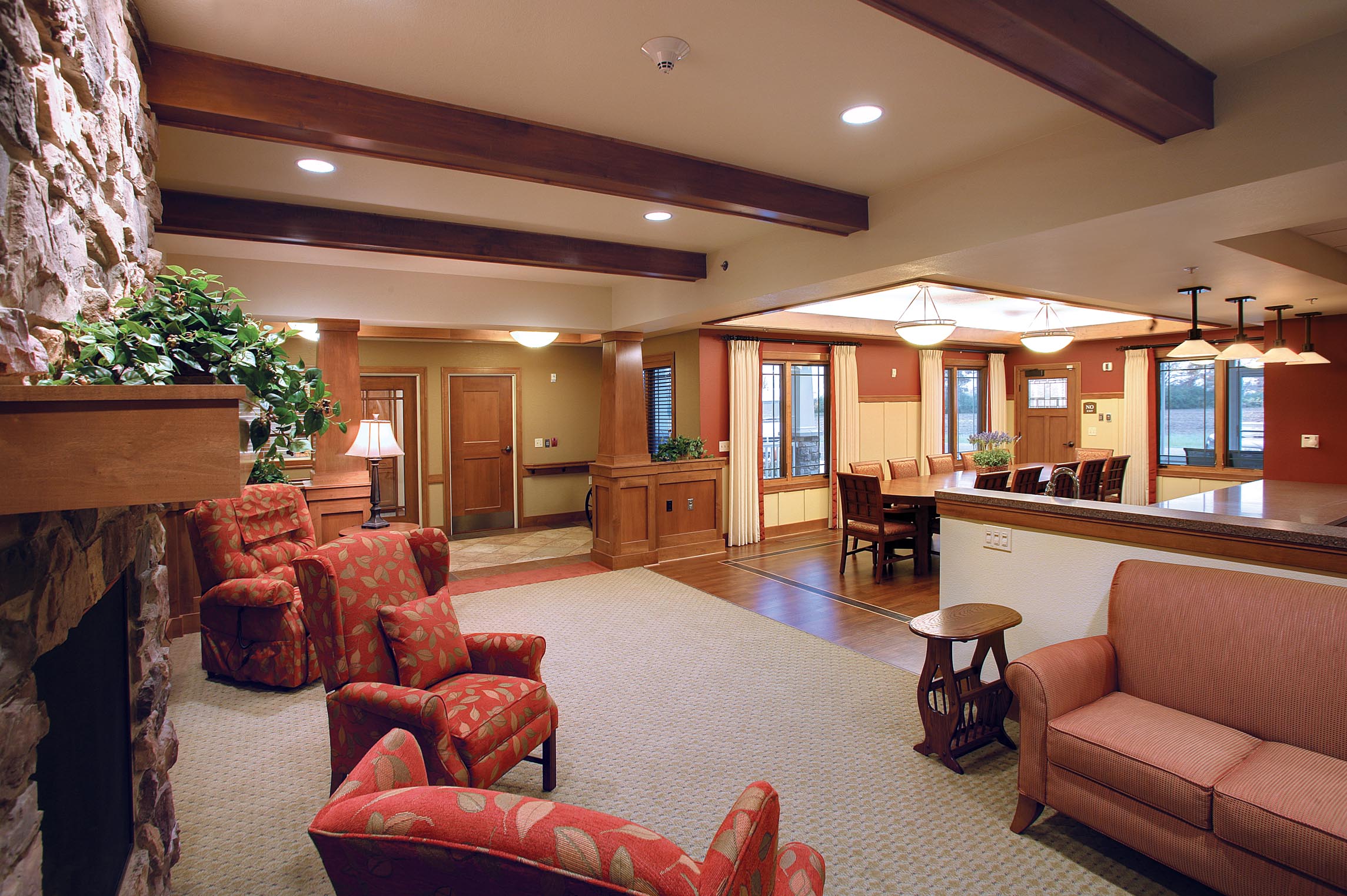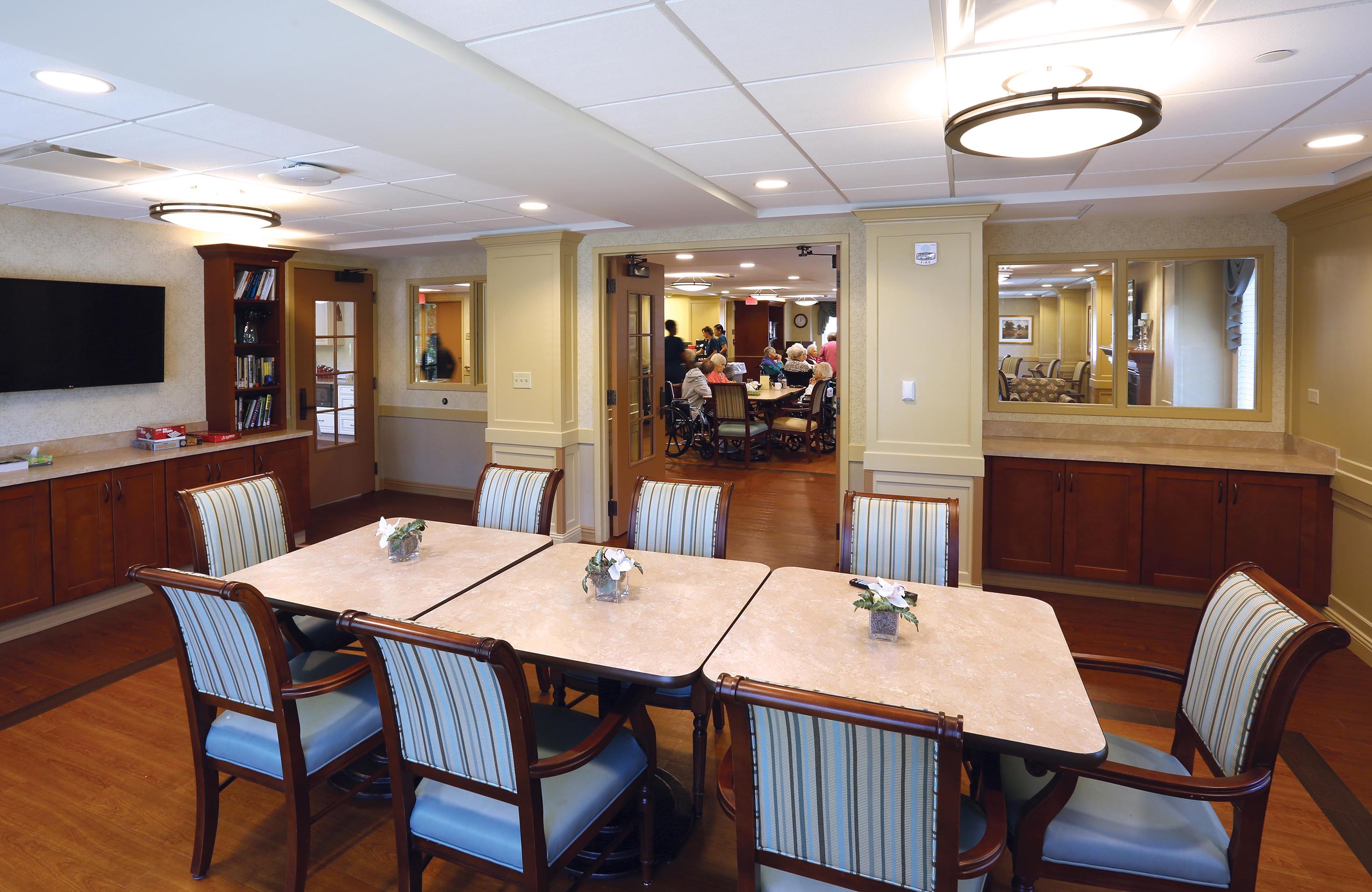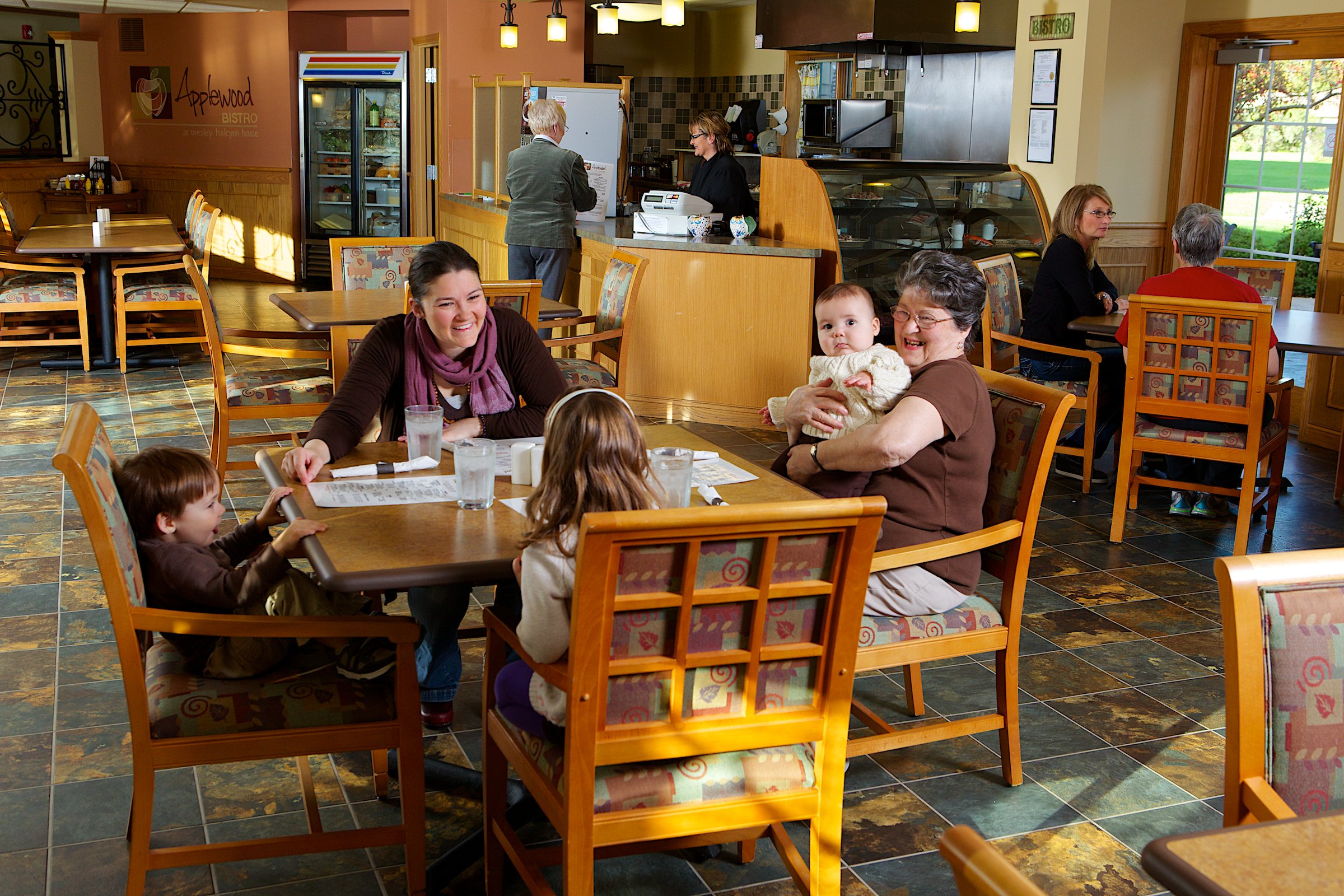1. Designs that offer choice and personalization are key.
Residents in skilled nursing often live with significant health challenges, but that does not mean they should lose choice. Environments that allow for personalization foster dignity and comfort.
Instead of one large dining hall, consider multiple smaller dining spaces, or zones within a larger room, which give residents control over their daily experience. Some may prefer the energy of a group meal, while others may need a quieter corner.
Staff spaces deserve the same attention. Break areas and lounges should reflect different ways of recharging. Some staff need quiet rest, while others draw energy from conversation. Providing a mix of seating, lighting and layouts communicates that the needs of both residents and employees matter.
2. Safety and welfare that feels invisible truly matter.
Safety in skilled nursing is obviously essential — but the best solutions do not feel institutional. At Hillview Health Care Center in La Crosse, WI, for example, a major renovation prioritized resident safety while also protecting independence. Wander management systems were integrated thoughtfully, with intuitive layouts that directed residents toward engaging spaces while minimizing the emphasis on restricted areas.
Done well, safety measures fade into the background, supporting dignity while reducing risk.
3. Support staff with thoughtful workspaces.
Staffing is one of the greatest challenges in long-term care today. Physical space truly plays a direct role in recruitment and retention. Work environments that are efficient, comfortable and respectful of the needs of employees help sustain caregivers and their demanding roles.
Shorehaven, a provider in southern Wisconsin that excels at putting people first, was successful in reimagining decentralized charting areas with uplifting finishes and customizable desks, which keep staff closer to residents. Serving kitchens were redesigned for efficiency without losing the warm, household feeling that residents enjoy.
Staff lounges should function as true break areas — separate from the care environment, with privacy and comfort. Simple upgrades like natural light, comfortable seating or even outdoor access can improve morale. When staff feel supported, patient care improves.
4. Build a strong sense of community.
Life in a skilled nursing center thrives on connections. Communities should have gathering places that encourage interaction. Hillview, for example, redesigned its core spaces to create a new “heart of the household,” filled with natural light and expansive views of nearby bluffs. The change is designed to reinvigorate daily life, drawing residents, staff, and families together.
Smaller spaces also matter. Lounges placed midway down resident corridors create resting spots that double as conversation hubs. Varied common rooms — some large, some more intimate — allow residents to choose environments that suit their comfort level. Welcoming areas like a bistro or a hospitality-style lobby also encourage family visits, reinforcing the sense of belonging.
5. Engage residents and staff in the design process.
When residents and staff feel a sense of ownership in a project, the impact goes beyond the physical environment. Listening sessions are valuable at the beginning, but input throughout the design process matters just as much.
Decisions about detailed finishes, or even furniture placement, can shape daily routines. Keep your decision-making team involved in the small details, too. The result is a building that feels like their home or their workplace.
6. Be creative - break the old mold.
Innovation in skilled nursing requires moving past outdated institutional norms. The Green House® model offers a powerful example.
Instead of one large building, Green House® communities are made up of small, 10- to 12-bed homes. The model has changed since its first introduction, but the focus remains grounded in creating an atmosphere for both residents and staff to live in a small community environment.
Each home is staffed by a universal caregiver called a Shahbaz, who provides direct care, cooks meals and manages household routines. Clinical support is still present, but it is intentionally kept in the background, so daily life feels more like living in a neighborhood and less like a medical care facility.
The results have been striking. Residents in Green House Homes often walk more, rely less on wheelchairs and experience improvements in independence and engagement. One resident who was previously non-verbal began speaking after moving in. Another resident, when asked what she missed from the old nursing home, answered simply, “Nothing.”
The Shahbaz appreciates the more intimate relationship with the elders, making the care more efficient and direct. With the intention of keeping consistent staff within the Green House Home, relationships between elders, families and staff are enhanced.
The lesson is clear: when we center designs on people instead of old institutional models, we create better outcomes and better lives.
The bottom line: People are the heart
Buildings and systems matter, but they are only as good as the people they support. In all senior care settings, residents, staff and families are the lifeblood of the community. When design decisions put individuals at the center, the benefits ripple outward, resulting in improved resident well-being, stronger staff satisfaction and greater trust from families.
As you consider the future of your property, ask: Are our spaces helping our people thrive? If the answer is yes, then you are on the right track. If not, there is opportunity waiting.
Because in the end, it has always been about the people — and always will be.





